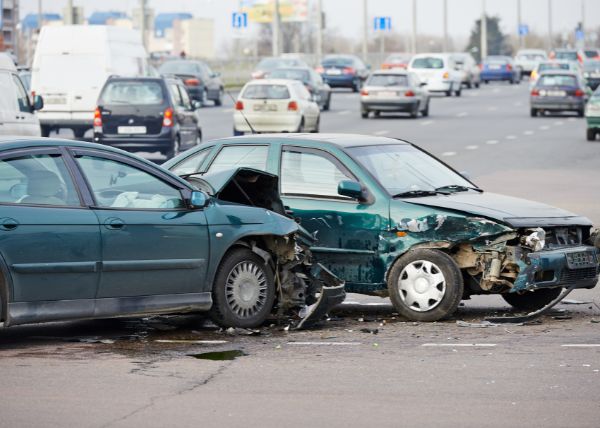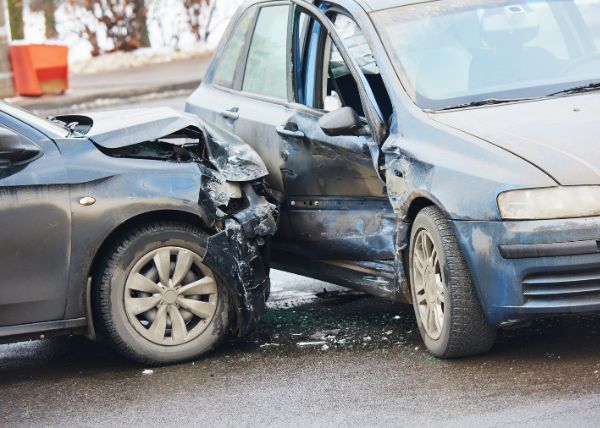Call for Free Consultation:
Free Consultation: (212) 425-0700
Call For Free Consultation: (212) 425-0700
Call for Free Consultation:
Free Consultation: (212) 425-0700
Call For Free Consultation: (212) 425-0700

A T-bone accident, also known as a side-impact or broadside collision, occurs when the front of one vehicle crashes into the side of another, forming a "T" shape. These types of crashes often happen at intersections and can lead to severe injuries and significant property damage. Determining fault in a T-bone accident can be complex, as it depends on various factors like traffic signals, road rules, and witness testimonies. At Kelner & Kelner, we have extensive experience in helping victims of T-bone accidents navigate the legal process to seek the compensation they deserve. If you’ve been injured in a T-bone accident, contact us today to discuss your case.
Free Consultation- Act Now
Injured in NYC? Contact Kelner and Kelner today at (212) 235-1027 or through our website.
A T-bone accident, also referred to as a side-impact or broadside collision, occurs when the front of one vehicle crashes directly into the side of another vehicle, forming a "T" shape. These accidents typically happen at intersections, especially when one driver runs a red light, fails to yield, or makes an improper turn. The impact of a T-bone collision can be especially dangerous, as the side of a vehicle generally offers less protection than the front or rear.
T-bone accidents are some of the most dangerous types of collisions because they expose the vehicle's occupants to severe risks. The side of a vehicle is not equipped with the same level of structural protection as the front or rear, meaning that the impact can result in serious injuries to the people inside. Common injuries include broken bones, traumatic brain injuries, spinal cord damage, and internal organ injuries. In extreme cases, T-bone accidents can even be fatal. The severity of the injuries often depends on factors such as the speed of the vehicles, the force of the impact, and whether or not the occupants were wearing seat belts.
Additionally, these accidents often occur at high speeds, especially in situations where one driver fails to stop at a red light or stop sign. With limited time to react, drivers and passengers may not have the chance to brace for impact, leading to even greater harm. If you’ve been involved in a T-bone accident, it’s crucial to seek legal representation to help you understand your rights and pursue compensation for your injuries.

Determining fault in a T-bone accident can be complex, as it depends on various factors, including traffic laws, witness statements, and the specific circumstances of the crash. However, there are common scenarios that can help establish liability:
One of the most common causes of T-bone accidents is when a driver fails to stop at a red light or stop sign. If a driver runs a red light and crashes into the side of another vehicle that has the right of way, the driver who ran the light is typically considered at fault.
If a driver is making a turn at an intersection and fails to yield to oncoming traffic, resulting in a T-bone collision, that driver may be held responsible for the accident. Drivers are required to give right of way to vehicles already in the intersection or approaching it.
A driver who is texting, talking on the phone, or otherwise distracted and causes a T-bone accident may be found at fault. Distracted driving can lead to mistakes, such as not noticing a red light or failing to see another car approaching.
If one driver is speeding or driving aggressively, they may be liable for causing the accident, especially if their speed prevents them from stopping in time at a light or intersection.
In some cases, poor road conditions (such as construction or potholes) or inadequate traffic signals can contribute to a T-bone accident. If road defects were a contributing factor, the municipality or entity responsible for the road maintenance could be held partially liable.
If a vehicle’s brakes or another critical system fails, causing a T-bone accident, the manufacturer or the party responsible for maintaining the vehicle may be at fault. However, this is less common than driver error.
Ultimately, determining fault in a T-bone accident will require an investigation into the specific details of the crash. If you’ve been involved in a T-bone accident, consulting with an experienced personal injury attorney is crucial to ensure that you receive fair compensation for any damages or injuries.
At Kelner & Kelner, we understand that after a T-bone accident, determining liability is crucial for securing the compensation you deserve. Proving who is at fault in these accidents can be a complex and challenging process, but with the help of an experienced car accident lawyer, you can navigate the legal hurdles and build a strong case.
One of the primary ways we assist our clients is by thoroughly investigating the circumstances of the crash to establish liability. Here’s how we can help:
Our legal team will collect and analyze critical evidence, such as police reports, eyewitness testimony, traffic camera footage, and accident scene photos. This evidence is essential in proving who was responsible for the crash.
In some cases, we may bring in accident reconstruction experts to provide a detailed analysis of the incident. These experts can recreate the accident scene and demonstrate how the collision occurred, helping to clarify who was at fault.
We will carefully review the relevant traffic laws and determine if the other driver violated any rules, such as running a red light, failing to yield, or driving recklessly. By proving that the other driver’s actions were negligent, we can strengthen your case.
If a fair settlement cannot be reached, we are prepared to take your case to court. Our team will present all the evidence, expert testimony, and legal arguments necessary to demonstrate liability and fight for the compensation you deserve.
If you've been injured in a T-bone accident, you don't have to navigate the legal process alone. Contact Kelner & Kelner today to discuss your case and learn how we can help you prove liability and pursue justice. Let us work to secure the compensation you're entitled to for medical bills, lost wages, and pain and suffering.
T-bone accidents are among the most dangerous types of car collisions due to the direct impact on the side of the vehicle. The severity of injuries in a T-bone crash can vary, but they often result in serious harm due to the lack of protection on the side of the car. Some of the most common injuries sustained in T-bone accidents include:
T-bone accidents can have long-term effects on the health and well-being of the victims. If you’ve been injured in a T-bone collision, it’s important to seek medical attention right away and consult with a skilled attorney to understand your legal options for compensation. At Kelner & Kelner, we are committed to helping victims of T-bone accidents receive the medical care and financial support they deserve.
If you’ve been injured in a T-bone accident, you don’t have to face the challenges alone. At Kelner & Kelner, we have the experience and resources to help you navigate the legal process and fight for the compensation you deserve. Whether you’re dealing with medical bills, lost wages, or long-term injuries, our dedicated team is here to ensure your rights are protected.
Contact us today to schedule a free consultation and take the first step toward securing the justice you deserve. Let us handle the legal complexities so you can focus on your recovery.

Attorney Advertising | Prior results do not guarantee a similar outcome. The information on this website is for general information purposes only. Nothing on this site should be taken as legal advice for any individual case or situation. This information is not intended to create, and receipt or viewing does not constitute, an attorney-client relationship. This site is protected by reCAPTCHA and the Google Privacy Policy and Terms of Service apply.